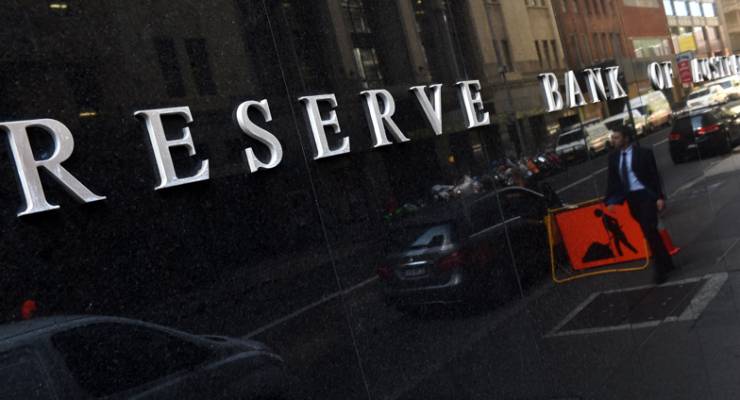
Yesterday the governor of the Reserve Bank, Philip Lowe, finally made clear what has been apparent for months — that the chances of an interest rate rise have significantly diminished and the chances of a cut are increasing. He says they’re now evenly balanced.
Until yesterday, the RBA had been saying the next move in rates would most likely be up. First markets expected a rise last year; then in 2019, then 2020. Now if there are any sustained signs of weakness, the bank will cut rates again. The key statistic will be jobs. At the moment, jobs growth is running at 2.3% (a little above the long-term average of 2%), and the unemployment rate is 5%. A sustained rise in the latter and fall in the former will trigger a rate cut.
The possibility of a rate cut will come as a surprise to the readers of The Australian Financial Review, which has been campaigning for interest rate rises. Today the AFR doubled down and described the bank’s “retreat” as “worrying”.
We know they have difficulty accepting reality there: yesterday the AFR editorialised that the banking royal commission — against which the paper campaigned at length — had only uncovered misconduct that was “largely historic”. As Hayne’s final report noted on the fees-for-no-service scandal, “even as late as November 2018 (when NAB’s Chair and CEO were to give evidence to the Commission) NAB had not agreed with ASIC what NAB would do in relation to the customers of its aligned licensees”. Historic, huh?
Central to the RBA’s revised thinking is the persistent underperformance of inflation. In his post-meeting statement on Tuesday and his speech yesterday, Lowe predicted that inflation would only slowly rise into the RBA’s target band (2-3%):
Underlying inflation is now expected to increase to about 2 per cent later this year and to reach 2¼ per cent by the end of 2020. The latest CPI data were consistent with this outlook. The headline CPI number was, however, a bit lower than we had previously expected, reflecting the decline in petrol prices that started late last year. We expect headline inflation to decline further this year …
This stubborn refusal of inflation to rise above 2% is a key reason why the AFR wants to move the goalposts and lower or abandon the RBA’s target band. It’s the ultimate neoliberal con-job: having claimed for decades that inflation is the monster that must be slain and that workers must accept lower wages in order to engineer it, neoliberals now insist historically low inflation isn’t low enough and workers and small businesses must face punitive interest rate rises for their sins.
On wages, Lowe has retreated from his previous readiness to accept that there is something wrong with the traditional link between jobs growth and wage rises. Instead, everything will be fine. “For some time, we have been expecting wages growth to pick up, but to do so gradually. The latest data are consistent with this, with a turning point now evident in the wage price index.”
But the only reasons wages growth has “picked up” is that public sector workers and healthcare workers have been enjoying moderate wage rises, and the Fair Work Commission has bumped up minimum wages. Wage growth for many private sector workers remains at or below inflation, reducing household consumption, harming sectors like retail, and undermining economic growth.
Another worry is dwelling investment — the RBA estimates it will fall 10% over the next two and a half years as property prices moderate. To accommodate that, there will have to be continuing government spending on infrastructure and a rebound in business investment. Here there are grounds for optimism: business lending is growing faster than residential lending, and mining investment will start rising, driven by mine expansions and discoveries in WA, SA, NSW and Queensland. Our trade account produced a record all time surplus of more than $22 billion in 2018 and the RBA’s commodity price index (a rough proxy for our terms of trade) rose to a level in January last seen in May 2012.
Further, the latest mine disaster in Brazil has already pushed up iron ore prices by 14% in the past week; they are up close to 30% since the current recovery started in late November. The 2018-19 budget estimates iron ore prices will average US$55 a tonne — they are currently above US$85 a tonne and have been well above the budget figure for all of the financial year. LNG and coal prices remain elevated, too.
Great news for resource companies and the government, which will have a nice windfall to spend in its election campaign. Workers might have to make do with electoral bribes rather than decent wage rises.









As Bill Mitchell has pointed out. The ‘all time high’ trade surplus is driven by a reduction in both exports and imports. Just that imports have been reduced to a greater extent.
http://bilbo.economicoutlook.net/blog/?p=41504#more-41504
Hardly a reason for optimism
I shake my head in wonderment thst the AFR seems to have such a mesmerising hold on the rest of the media. This was the journal that was running uncritically positive stories
from various scribes about the Stock Market just weeks before it tanked. More than ten years later it still hasn’t recovered its high despite the usual winnowing out of the dead and dying